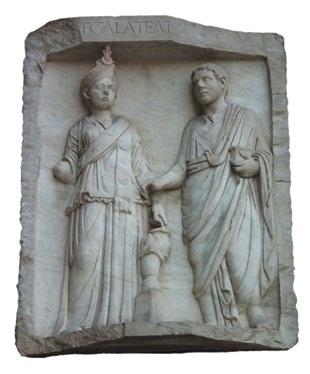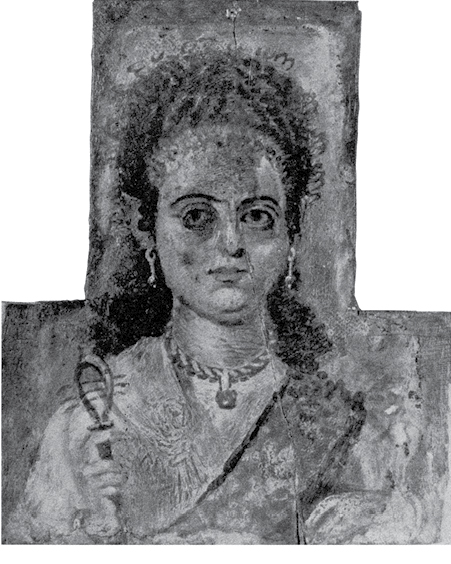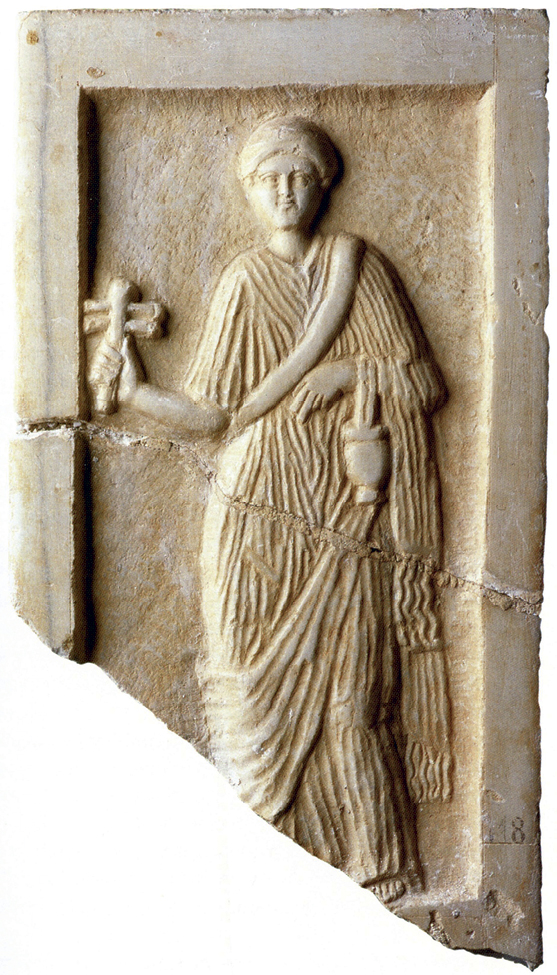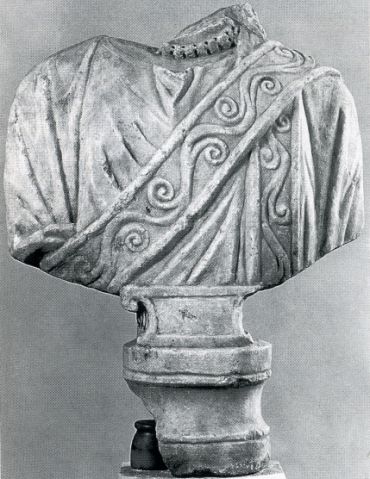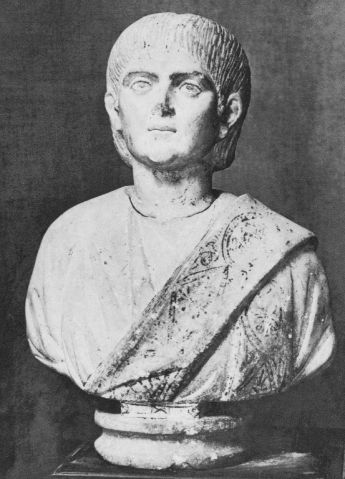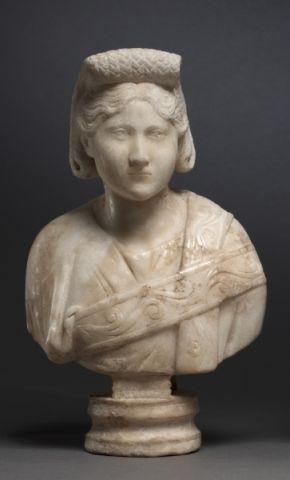
“Isisdienerin”, which in English will be Isis servant or devotee. She’s wearing palla contabulata which was most likely painted in black with bright Isis symbols.
- “Secondly, a palla drapery with a thick edge folded in layers, i.e. a contabulated coat, has been preserved in the monument inventory. Since the contabulatio, i.e. the folded fabric bar, often appears colored, in some cases in which colors are detectable, appears black – black becomes parallel attested to this by utterances in written sources for the Isis robe – this image of the goddess is also called “melaneímôn” or “melanóstolos” in research.” (see also frescoes from Pompeii, ceremonies at the Isis Temple).
ornate band (sash)
Marble statue from Egypt, Hermopolis probably; 130-140 CE.
Statue is kept in the Staatliche Museen zu Berlin
Source:
Zur Darstellung von religiöser Tracht in Griechenland und Rom, Hans Rupprecht Goette https://www.academia.edu

Statue de marbre, Hermopolis Magna (El-Ashmounein), c. 130–140
apr. J.-C. Berlin, Ägyptisches Museum, inv. no 19581
© Staatliche Museen zu Berlin, Ägyptisches Museum und Papyrussammlung, photo Jürgen Liepe
It is to this “black” Isis that the melanophores [those wearing black] owe their name, their clothing and their function, which was undoubtedly to sing of mourning for Isis during the passion of Osiris.
This stole is found on both the effigies of Isis and Isias. This is the case on two acephalous female statues from Hermopolis Magna (fig. 16.12), where it is enhanced with a decoration of stars and / or Egyptian crowns. On the funerary stele of Galatea, the young woman wears a tunic over which is thrown a fringed stole decorated with crescents and stars.
source:
Les dévotes isiaques et les atours de leur déesse, Richard Veymiers https://www.academia.edu
In:
Individuals and Materials in he Greco-Roman Cults of Isis. Agents, Images, and Practices
Proceedings of the 6th International Conference of Isis Studies (Erfurt, May 6–8, 2013 – Liège, September 23–24, 2013)

